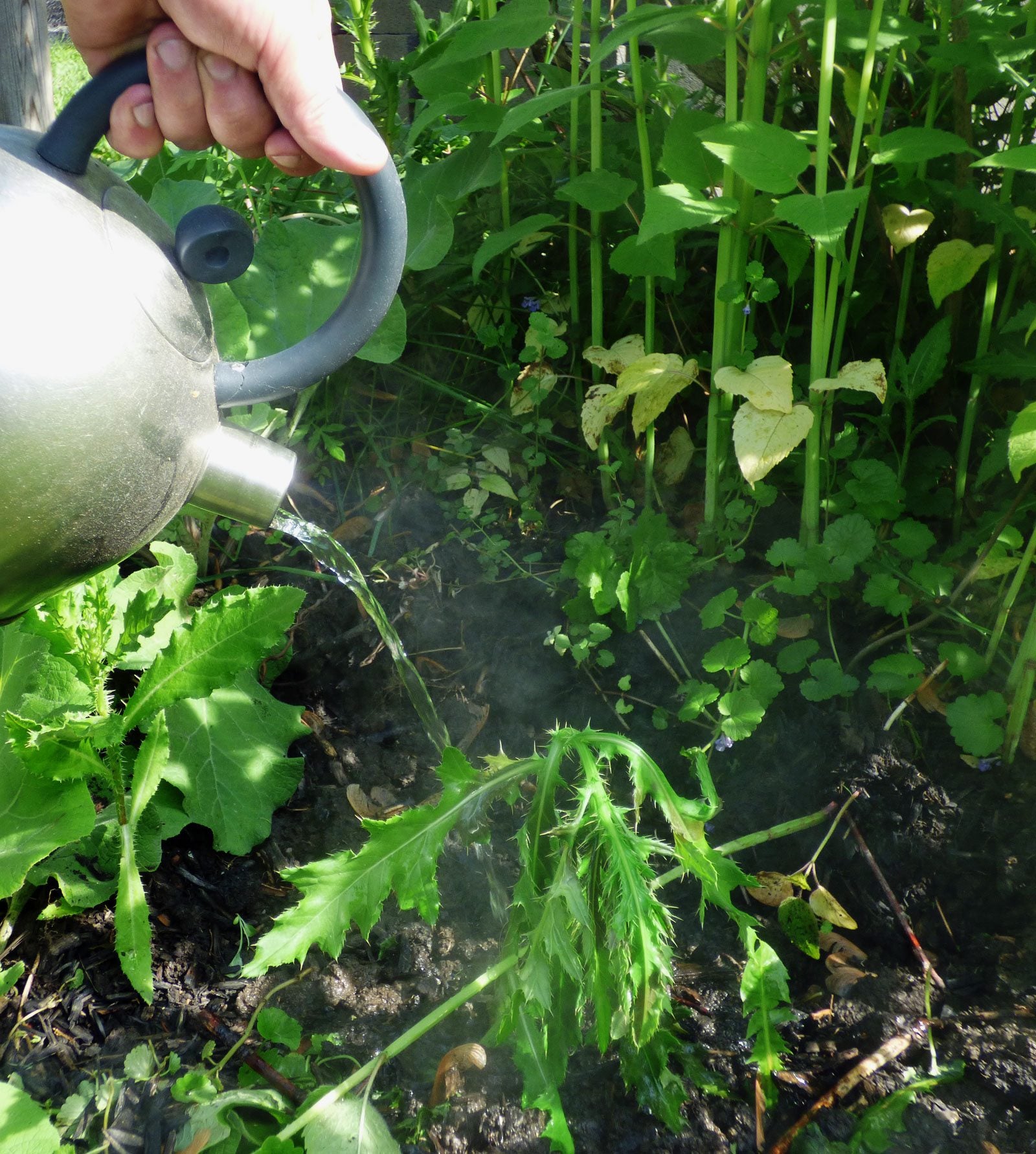Hot Water And Plant Growth: Effects Of Pouring Hot Water On Plants


Garden lore is full of interesting methods of treating and preventing diseases that no rational gardener would actually try at home. Even though treating plants with hot water sounds like it should be one of those crazy home remedies, it can actually be very effective when applied properly.
Hot Water and Plant Growth
You’ve probably heard a lot of really unusual home remedies for pests and plant diseases (I know I have!), but using hot water on plants is actually something that works quite effectively on certain pests and pathogens. Unlike various pesticides or home remedies, hot water baths for plants can be quite safe for the plant, environment, and gardener alike, provided you’re careful how you apply the water. Before we get started in all this hocus-pocus, it’s important to note the hot water effects on plant growth. When you add water that’s too hot to plants, you’ll end up killing them – there’s no two ways about it. The same boiling water that cooks your carrots in the kitchen will also cook your carrots in the garden, and there’s nothing magical about moving them outdoors that changes this. So, with this in mind, using boiling water to kill and control weeds and unwanted plants can be very effective. Use boiling water to kill the weeds in sidewalk cracks, between pavers, and even in the garden. As long as you keep the boiling water from touching your desirable plants, it makes a wonderful, organic way to control weeds. Some plants are more tolerant to hot water than others, but trust me on this: before you attempt to heat treat your plants, get a very accurate probe thermometer to ensure you know the water temperature that you’re dumping on your plants.
How to Heat Treat with Water
Heat-treating plants is an age-old way of dealing with a variety of soil-borne pests, including aphids, scale, mealybugs, and mites. In addition, many bacterial and fungal pathogens are destroyed within seeds left in water heated to the same temperatures required for killing pests. That magic temperature is just about 120 degrees F. (48 C.), or 122 F. (50 C.) for seed disinfecting. Now, you can’t just go around pouring hot water on plants willy-nilly. Many plants can’t tolerate hot water on their leaves and above ground parts, so always be careful to apply the water directly to the root zone. In the case of insect pests, it’s usually better to submerge the entire pot in another pot full of water in that 120 F. (50 C.) range and hold it there for 5 to 20 minutes, or until your probe thermometer says the inside of the root ball has reached 115 F. (46 C.). As long as you don’t overheat the roots of your plant and you protect the leaves and crown from the heat, watering with hot water will have no harmful effects. In fact, it’s better to water with hot water than it is to water with very cold water. Generally, you should use water that’s room temperature so you protect both your plant and its delicate tissues from scalding.
Sign up for the Gardening Know How newsletter today and receive a free copy of our e-book "How to Grow Delicious Tomatoes".

Kristi Waterworth was a regular contributor to Gardening Know How for many years, answering countless queries on plant pests and diseases.